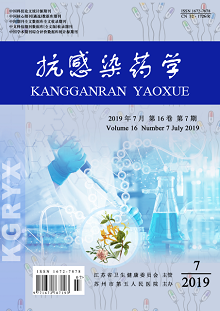LI Fang-hua, ZHAO Jing, XU Ping, SONG Hua-feng
Objective: To analyze the resistance to anti-tuberculosis drugs(TB) in AIDS Patients with Mycobacterium TB infection and its influence on expression of T cell subsets, and to provide a reference for clinical diagnosis and rational use of drugs. Methods: The data of 23 AIDS patients with Mycobacterium tuberculosis (MTB) infection treated from January 2014 to December 2018 were selected as the observation group, and the data of 30 healthy patients in the same period were selected as the healthy group. The levels of T lymphocyte subsets (CD3, CD4, CD8, CD4 and CD25) in peripheral blood of the two groups detected by flow cytometry were analyzed. Meanwhile, the anti-tuberculosis drug resistance rate and its effect on T cell subpopulation expression in patients infected with Mycobacterium tuberculosis were analyzed. Results: Compared with the healthy control group, there were significant differences in T lymphocyte levels (CD3, CD4, CD8, CD4 and CD25) in patients with Mycobacterium tuberculosis infection. In the sensitivity test of anti-tuberculosis drugs in 23 patients, the resistance rate of Mycobacterium tuberculosis to isoniazid was the highest (39.13%), while the resistance rate to Streptomycin, Rifampicin and Ethambutol were 30.04%, 26.09% and 8.70%, respectively. Conclusion: HIV patients with Mycobacterium tuberculosis (MTB) infection had a higher incidence of MTB resistance to first-line anti-TB drugs, and there were significant differences in the expression of T-lymphocyte subpopulations compared with the healthy group.
